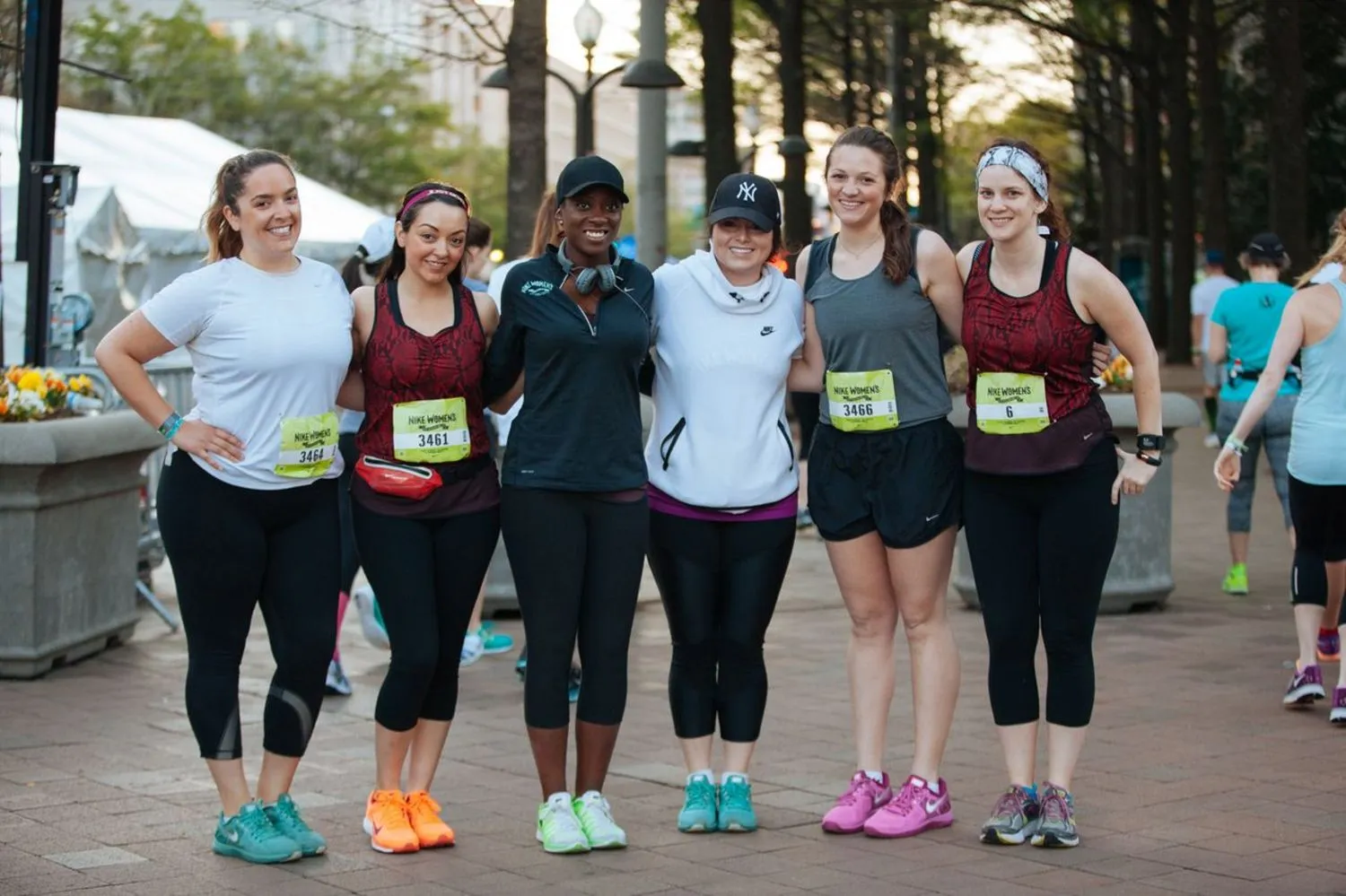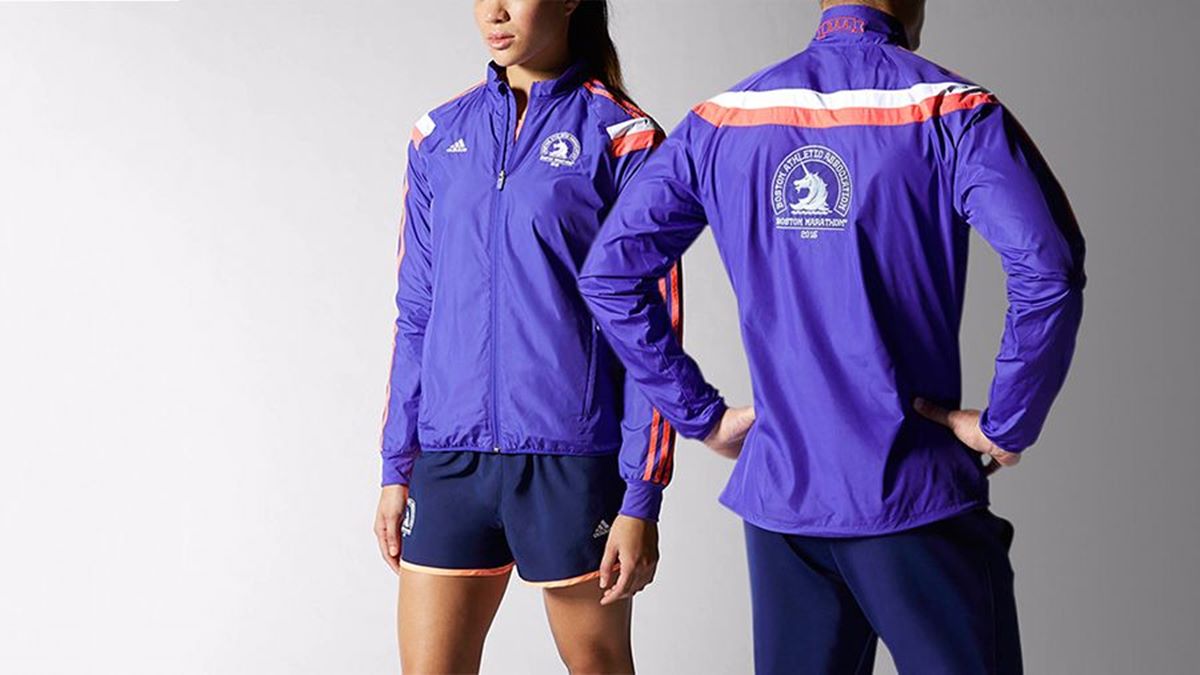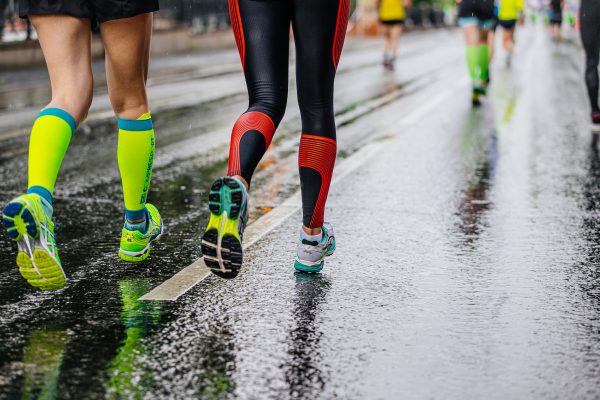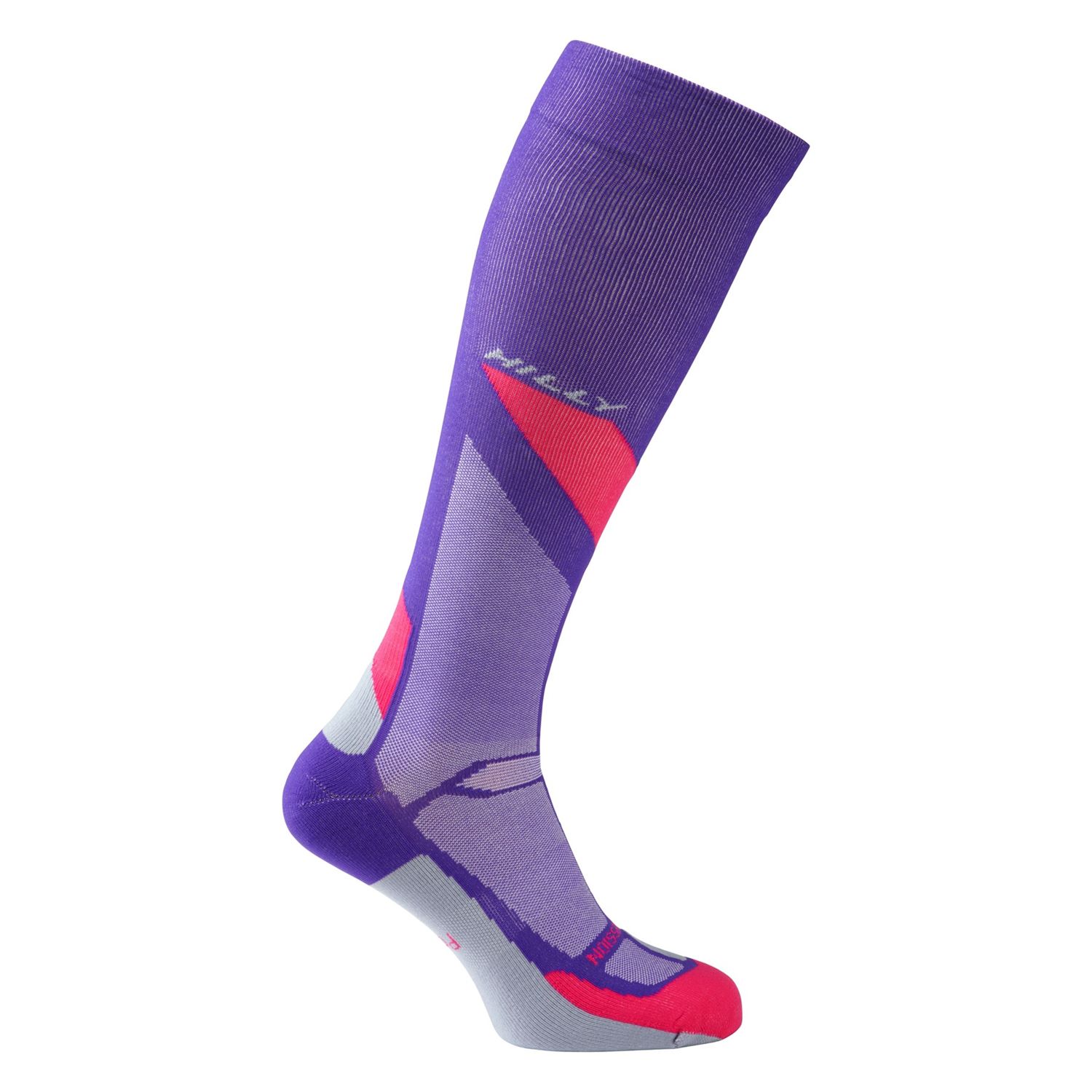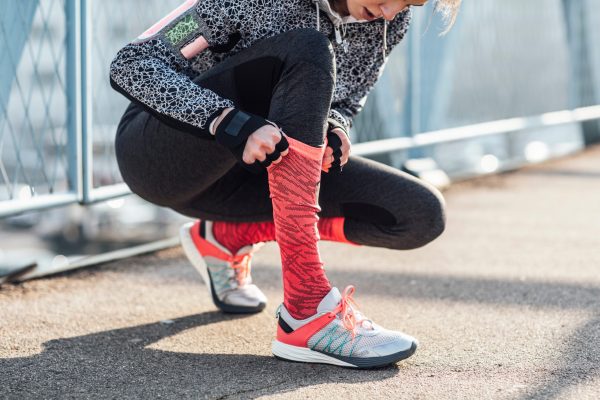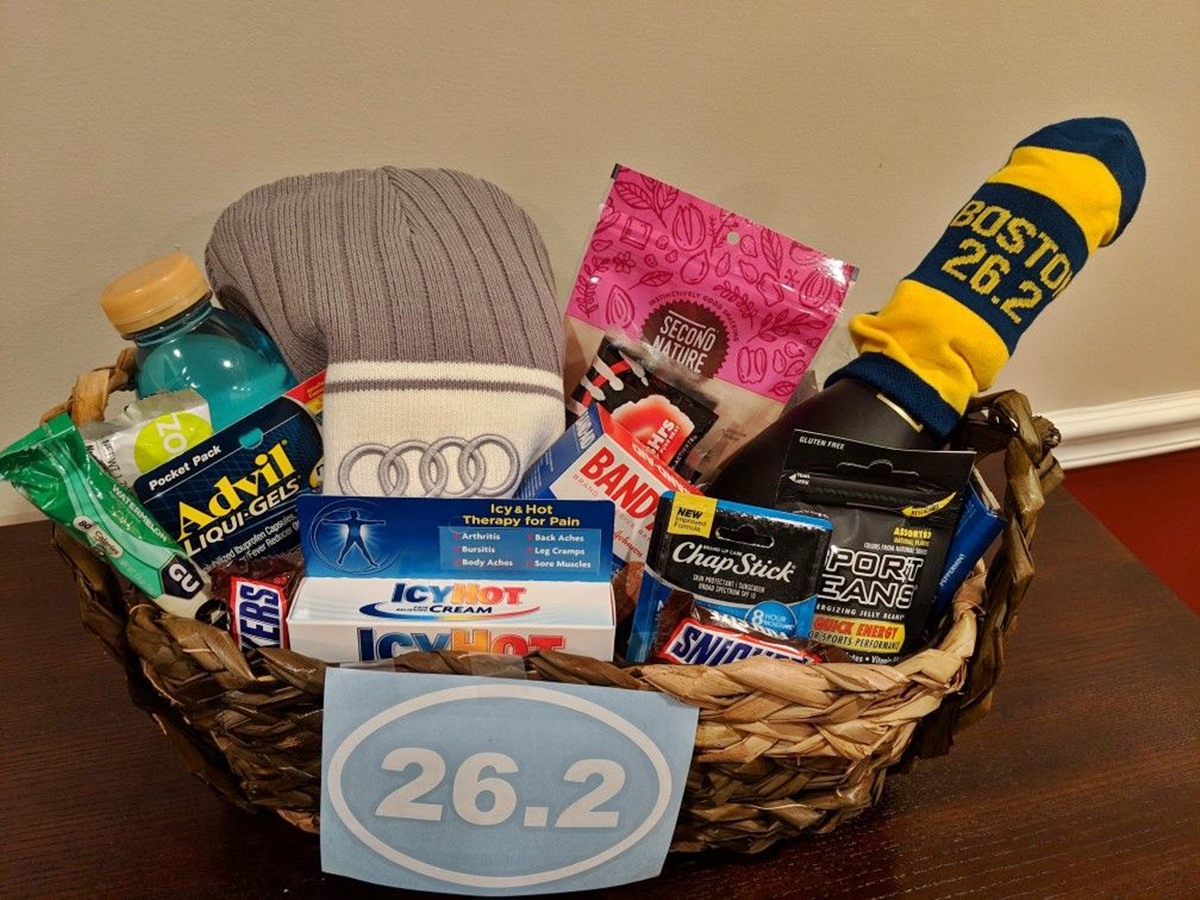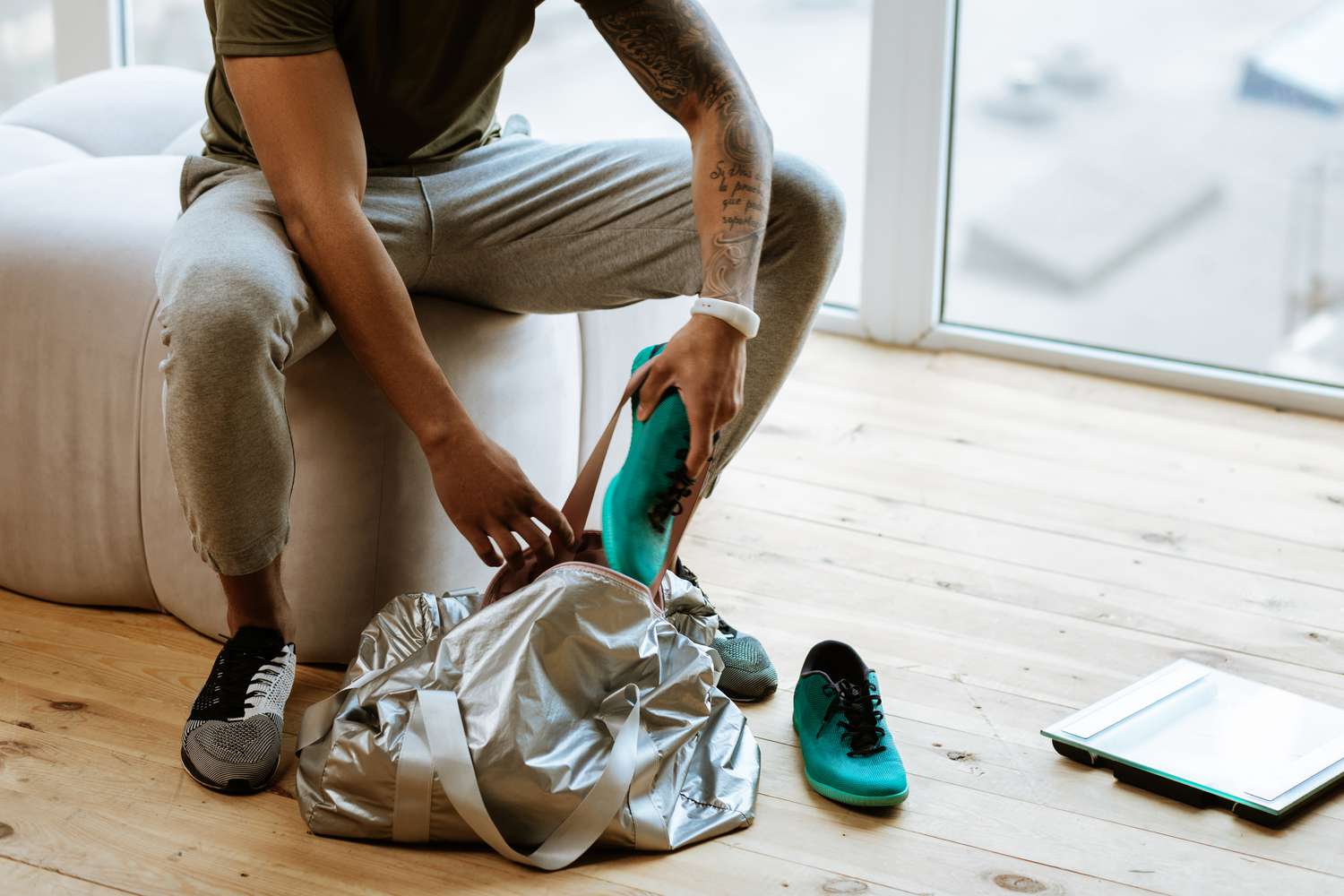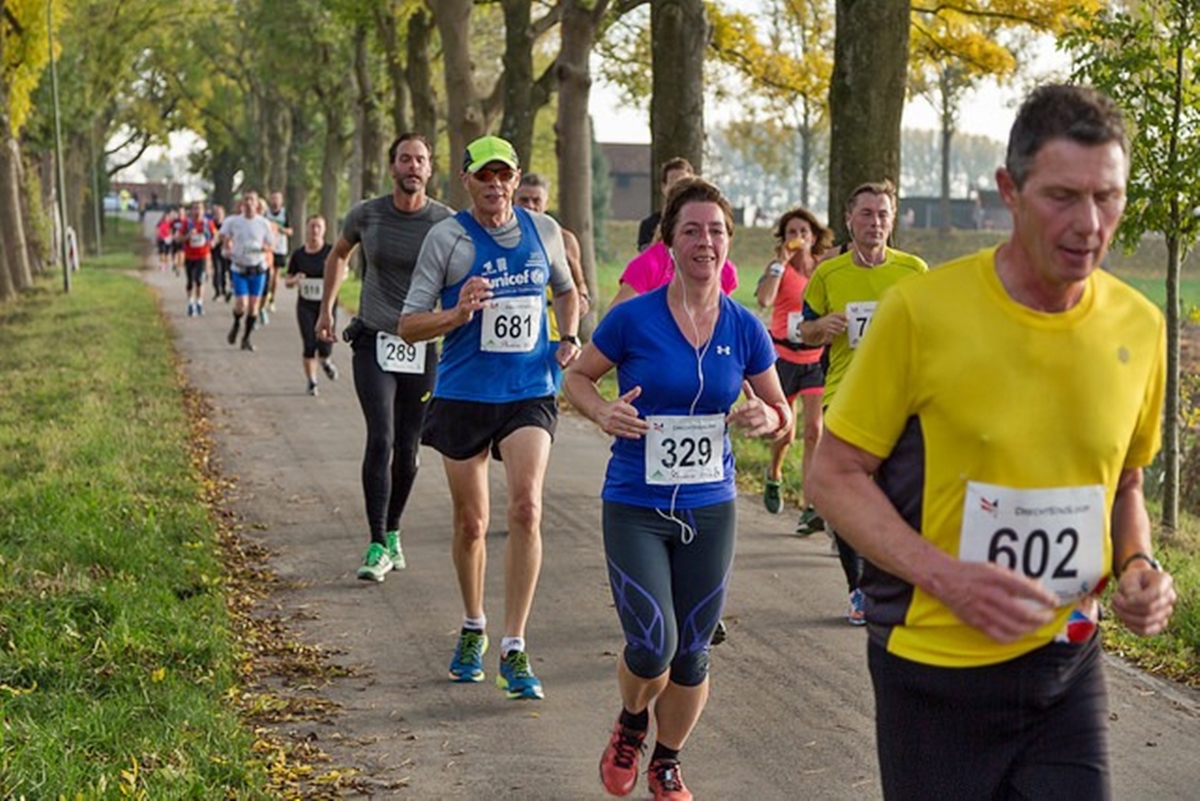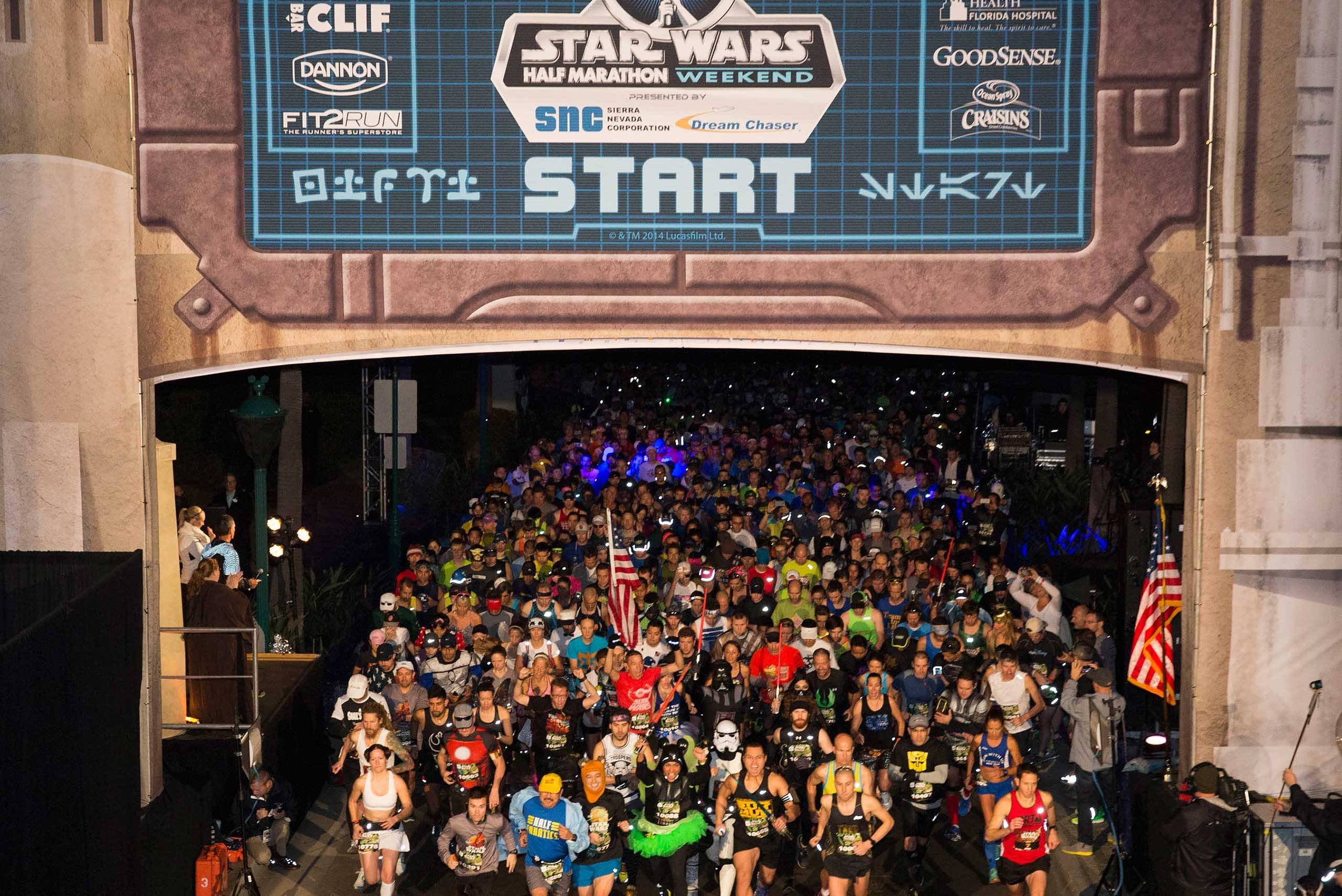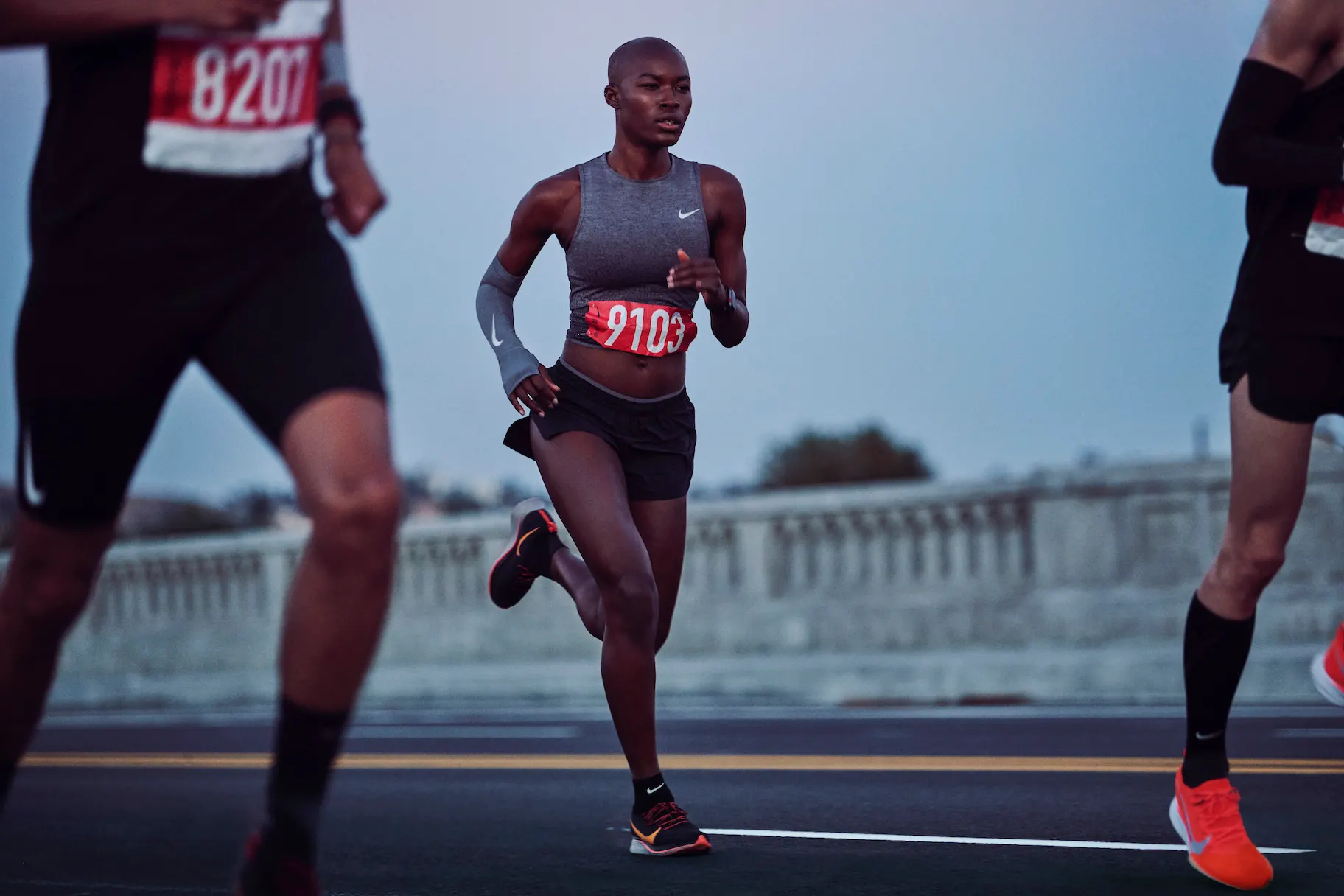

Featured
What To Wear For A Marathon
Modified: January 22, 2024
Looking for the perfect running outfit for your marathon? Check out our featured collection, designed to keep you stylish and comfortable throughout the race.
Introduction
Welcome to the exhilarating world of marathon running! Whether you’re a seasoned marathoner or have just caught the running bug, you’re in for an incredible journey. As you prepare for your upcoming marathon, one important aspect to consider is what to wear on race day. Making the right clothing and accessory choices can greatly impact your comfort and performance throughout the long, grueling miles.
When it comes to marathon running, selecting the appropriate apparel goes beyond just looking good. It’s about finding the balance between comfort, functionality, and style. From head to toe, every piece of clothing and accessory you wear plays a crucial role in your overall running experience.
In this article, we’ll delve into the key factors to consider when choosing your marathon outfit. We’ll explore the importance of selecting the right shoes, the ideal running clothes, essential accessories, and tips for running in different weather conditions. So, let’s dive in and discover how to dress like a pro for your marathon!
Choosing the Right Shoes
When it comes to marathon running, choosing the right shoes is paramount. Your shoes are your closest companions on the long journey to the finish line, providing support, cushioning, and stability. The wrong pair can result in discomfort, pain, and even injury.
First and foremost, it’s essential to find a pair of running shoes that fit properly. Ill-fitting shoes can lead to blisters, black toenails, and discomfort. Visit a specialty running store where trained professionals can assess your foot type and running style to help you find the perfect fit.
Consider the level of cushioning and support that you need. Different runners have different preferences and needs, so choose shoes that align with your specific requirements. If you have a neutral gait, you may prefer shoes with medium cushioning. If you overpronate, look for shoes with added stability features. And if you have a high arch, opt for shoes with ample arch support.
Additionally, pay attention to the weight of the shoes. Lighter shoes can give you a feeling of agility and speed, but they may not provide as much cushioning. On the other hand, heavier shoes may offer more support and protection but can feel cumbersome during long distances. Strike a balance between weight and comfort based on your running style and personal preference.
Lastly, don’t forget to break in your new shoes before race day. Give yourself enough time to wear them on shorter runs to ensure they feel comfortable and adapt to the shape of your feet. The last thing you want is to discover any discomfort or fit issues during the marathon.
Remember, the right pair of shoes can make a world of difference in your marathon experience. Take the time to find the perfect fit, choose the appropriate level of cushioning and support, and break them in properly. Your feet will thank you for it!
Selecting the Perfect Running Clothes
When it comes to marathon running, selecting the perfect running clothes is crucial for comfort and performance. The right apparel can help regulate your body temperature, wick away sweat, and provide freedom of movement.
Start with moisture-wicking fabrics. Look for running tops and bottoms made from breathable materials that effectively pull sweat away from your body. Avoid cotton, as it absorbs moisture and can leave you feeling damp and uncomfortable throughout the race. Instead, opt for synthetic fabrics like polyester or nylon blends that will keep you dry and cool.
Consider the weather conditions on race day. If it’s a hot day, choose lightweight and breathable clothing that allows airflow and ventilation. On colder days, layering is key. Start with a moisture-wicking base layer, add a mid-layer for insulation, and finish with a lightweight, windproof outer layer to protect against the elements.
Ensure that your running clothes fit well. Avoid clothes that are too tight or too loose, as they can cause discomfort and hinder your movement. Opt for a comfortable, athletic fit that allows freedom of movement without being too restrictive.
Take into account the length of your race. For shorter distances, you may opt for shorts and a lightweight top. However, for longer distances like marathons, consider wearing compression gear. Compression clothing can provide additional support to your muscles, reduce muscle fatigue, and enhance recovery.
Don’t forget about visibility. If you’ll be running in low light conditions or at night, it’s essential to wear reflective clothing or accessories. Invest in a high-visibility running vest or choose clothing with reflective strips to ensure that you’re easily visible to drivers and other runners.
Ultimately, selecting the perfect running clothes is about finding the right balance of comfort, functionality, and style. Choose moisture-wicking fabrics, consider the weather conditions, ensure a proper fit, and prioritize visibility when needed. With the right running clothes, you’ll feel confident, comfortable, and ready to conquer your marathon!
Layering for Different Weather Conditions
When it comes to marathon running, you’ll likely encounter a range of weather conditions throughout your training and on race day. To ensure optimal comfort and performance, it’s important to understand how to layer your clothing appropriately for different weather scenarios.
In colder temperatures, layering is key to regulate your body temperature and keep you comfortable. Start with a moisture-wicking base layer that will pull sweat away from your skin. This helps prevent you from feeling chilled due to wet clothing. Choose a long-sleeved top or a lightweight thermal layer for added insulation.
In moderate temperatures, a single layer of moisture-wicking clothing may be sufficient. Look for lightweight fabrics that provide breathability and freedom of movement. Consider wearing shorts or capri-length bottoms to keep your legs cool.
On hot and humid days, lightweight and breathable clothing is crucial. Opt for shorts and a moisture-wicking tank top or t-shirt. Look for materials with mesh panels or venting to enhance airflow and keep you cool. Additionally, consider wearing a hat or visor to shield your face from the sun.
When running in rainy weather, layering is still important to protect yourself from the elements. Start with a moisture-wicking base layer and add a lightweight waterproof or water-resistant outer layer. Look for clothing with sealed seams or taped zippers to prevent water from seeping in. Consider wearing a cap with a brim or a waterproof jacket with a hood to keep rain off your face.
For windy conditions, layering can help provide added protection. Start with a base layer to wick away sweat, then add a mid-layer for insulation. Choose a windproof outer layer to shield against the gusts. Consider wearing a buff or neck gaiter to protect your neck and face from the wind.
Remember, it’s crucial to adapt your clothing layers based on the weather conditions throughout your marathon training and on race day. Layering not only allows you to adjust your comfort level but also provides flexibility as weather conditions can change throughout the day. Experiment with different combinations of clothing layers during your training runs to find what works best for you.
Dressing for Comfort and Performance
When it comes to marathon running, dressing for comfort and performance is essential. The right clothing and accessories can make a significant difference in how you feel and perform during the race. Here are some tips to help you dress for optimal comfort and performance:
Choose clothing made from moisture-wicking materials. This will help keep you dry by pulling sweat away from your body, preventing chafing and discomfort. Look for clothing made from fabrics like polyester or nylon blends that are specifically designed for athletic performance.
Avoid wearing cotton as it retains moisture and can lead to discomfort and chafing. Opt for synthetic materials that are breathable and quick-drying.
Prioritize comfort when selecting your running clothes. Avoid clothing that is too tight or too loose, as it can cause irritation or hinder your movement. Look for athletic-fit clothing that allows for freedom of movement without being restrictive.
Paying attention to your comfort extends beyond clothing. Consider wearing compression gear to provide additional support to your muscles and enhance circulation. Compression socks or calf sleeves can help reduce muscle fatigue and aid in recovery.
Invest in a good pair of running socks. Look for moisture-wicking and cushioned socks that provide comfort and minimize the risk of blisters. Avoid cotton socks as they tend to retain moisture.
Don’t forget about your undergarments. For women, a supportive sports bra is essential for comfort and preventing chafing. Look for sports bras specifically designed for high-impact activities.
Protect yourself from the sun. Wear a hat or visor to shield your face from direct sunlight and opt for clothing with built-in UV protection. Apply sunscreen to exposed areas of skin, and consider wearing sunglasses with UV protection to protect your eyes.
Prioritize functionality when selecting your running gear. Look for clothing with pockets for easy storage of energy gels, keys, or your phone. Consider using a running belt or waistpack to carry your essentials if your clothing doesn’t have sufficient storage options.
Experiment with your marathon outfit during your training runs to ensure its comfort and performance. Avoid wearing brand new clothing or accessories on race day, as you want to be confident that your gear works for you. Fine-tuning your outfit will contribute to a more enjoyable and successful marathon experience.
Essential Accessories for Marathon Runners
As a marathon runner, having the right accessories can greatly enhance your comfort, performance, and overall race experience. These accessories are designed to support and assist you throughout the grueling miles. Here are some essential accessories to consider:
A running watch or GPS device: Investing in a reliable running watch or GPS device can help you track your pace, distance, and time during the marathon. This valuable data can help you pace yourself and optimize your performance.
Hydration gear: Staying hydrated is crucial during a marathon. Consider carrying a handheld water bottle or wearing a hydration belt or vest to ensure easy access to water throughout the race. Some hydration gear also includes pockets for storing energy gels or snacks.
Headphones: If you enjoy running with music, be sure to bring your favorite headphones. Opt for wireless or sweat-resistant headphones that won’t hinder your movement or become uncomfortable during the race.
Running belt or waist pack: A running belt or waist pack can provide convenient storage for your essentials like keys, phone, ID, or energy gels. Look for a lightweight and adjustable option that won’t bounce or cause discomfort.
Anti-chafing products: To prevent chafing and irritation, consider using anti-chafing products like body glide or petroleum jelly. Apply these products to areas prone to friction, such as thighs, underarms, or nipples, to reduce discomfort during the race.
Recovery tools: After a marathon, recovery is crucial. Consider investing in foam rollers or massage tools to help soothe and relax your muscles. These tools can aid in recovery and reduce muscle soreness.
Sunglasses: Protect your eyes from sun glare and UV rays by wearing sunglasses specially designed for running. Look for sunglasses with UV protection and a comfortable fit that won’t slide or bounce during the race.
Running hat or visor: Shield your face from the sun and keep sweat out of your eyes by wearing a lightweight, breathable running hat or visor. Opt for one with moisture-wicking properties and a design that allows for ventilation.
Reflective gear: If you’ll be running in low-light conditions or at night, ensure you’re visible to others on the road. Wear reflective gear, such as a reflective vest, headband, or wristbands, to increase your visibility and safety.
Compression gear: Consider wearing compression socks, sleeves, or tights to provide extra support and improve circulation during the marathon. Compression gear can help reduce muscle fatigue and aid in recovery.
These accessories are designed to enhance your comfort, convenience, and performance during a marathon. Choose the ones that align with your needs and preferences, and make sure to test them during your training runs to ensure they work well for you on race day.
Tips for Choosing the Right Socks
Choosing the right socks may seem like a minor detail, but they can have a significant impact on your comfort and performance during a marathon. The right socks can help prevent blisters, provide cushioning, and wick away moisture. Here are some tips for choosing the right socks:
Material: Opt for moisture-wicking socks that are made of synthetic materials such as polyester or nylon. These materials help to pull moisture away from your feet, keeping them dry and reducing the risk of blisters. Avoid cotton socks as they tend to retain moisture, leading to discomfort and friction.
Cushioning: Consider the level of cushioning you prefer. Some runners prefer thicker, more cushioned socks for added comfort and impact absorption, while others prefer thinner socks for a lightweight feel. Choose socks that strike a balance between cushioning and breathability, based on your personal preference and the distance of the race.
Fit: Look for socks with a snug, yet comfortable fit. They should hug your feet without being too tight or too loose. Avoid socks that bunch up or slide down during your run, as they can cause irritation or blisters. Consider socks with arch support or compression for additional comfort and stability.
Seamless construction: Opt for socks that have a seamless construction. Flat seams or no seams at all help to reduce the risk of chafing and irritation, especially on longer runs. Seamless socks provide a smoother surface against your skin, minimizing the likelihood of blisters and hot spots.
Height: Consider the height of the socks depending on your personal preference and the weather conditions. Ankle socks provide a minimalist feel and are suitable for warmer weather, while crew-length or calf-length socks offer more coverage and can provide additional support and warmth in cooler temperatures.
Testing: Prior to race day, it’s important to test your socks during your training runs. This will give you the opportunity to assess their fit, comfort, and performance. If you experience any discomfort or issues, you can make adjustments and find the right socks that work for you.
Remember, investing in high-quality, moisture-wicking socks can help keep your feet dry, comfortable, and blister-free during a marathon. Finding the right socks may require some trial and error, so don’t be afraid to experiment and discover what works best for your feet and running style.
Importance of Proper Sports Bras
For women participating in marathons, wearing a proper sports bra is of utmost importance. The right sports bra provides essential support, comfort, and protection during intense physical activity. Here are a few reasons why wearing a proper sports bra is crucial:
Reduced breast movement: The breasts are not made up of muscle but rather soft tissue and ligaments. During running, breast movement can cause discomfort and even pain if not properly supported. A high-impact activity like marathon running can lead to breast sagging over time. A sports bra with adequate support helps minimize breast movement and reduces strain on the ligaments, preventing long-term damage.
Enhanced comfort: A good sports bra is designed with moisture-wicking fabrics that keep the skin dry and comfortable. It provides a snug fit without causing any discomfort or chafing. The right level of compression and support can alleviate discomfort caused by breast movement and help you focus solely on the thrill and challenge of the marathon.
Prevention of breast pain and damage: Ill-fitting or unsupportive bras can cause breast pain and discomfort during a marathon. Sports bras with proper support and compression help prevent breast pain by minimizing excessive movement. They also reduce the risk of breast tissue damage and injuries that can result from inadequate support.
Improved performance: Wearing a proper sports bra enables you to focus on your running form and performance, rather than being distracted or uncomfortable due to breast movement. With the right support, you can maintain a steady and efficient stride, leading to improved performance and a more enjoyable marathon experience.
Body confidence: A well-fitting and supportive sports bra can boost your confidence and help you feel more comfortable and secure in your own body. When you feel confident and supported, you can focus on your running technique and achieve your goals with a positive mindset.
It’s important to get fitted for a sports bra professionally to ensure you find the right size and support level for your specific needs. Consider factors such as band size, cup size, adjustability, and the level of support required. Invest in high-quality sports bras that are specifically designed for high-impact activities like running.
Remember, wearing the proper sports bra is not only about comfort and support but also about protecting your breast health in the long run. Prioritize your well-being and enjoy your marathon with confidence and peace of mind.
Protecting Yourself from the Sun
When participating in a marathon, it’s crucial to protect yourself from the harmful effects of the sun. Prolonged exposure to the sun’s ultraviolet (UV) rays can lead to sunburn, skin damage, and even increase the risk of skin cancer. Here are some tips to help you protect yourself from the sun during your marathon:
Apply sunscreen: Before heading out for your race, apply a broad-spectrum sunscreen with a high SPF (Sun Protection Factor) all over your exposed skin. Choose a sunscreen that is water-resistant and sweat-resistant to ensure it stays in place during your run. Don’t forget to apply sunscreen to commonly overlooked areas such as the ears, back of the neck, and the tops of your feet.
Wear protective clothing: Opt for lightweight, loose-fitting clothing that covers your skin and provides protection from the sun. Look for clothing with built-in UPF (Ultraviolet Protection Factor) which blocks a significant amount of harmful UV radiation. Wear long-sleeved shirts, hats with wide brims, and sunglasses with UV protection to shield your face from direct sunlight.
Seek shade: When possible, take advantage of shaded areas along the course. Running in areas with natural shade, such as tree-covered paths or buildings, can provide temporary relief from direct sun exposure. Be sure to plan your hydration and fueling strategies around these shaded areas to maximize your comfort and sun protection.
Stay hydrated: Keep your body hydrated to prevent dehydration and maintain overall health. Drink plenty of fluids throughout the race, and consider carrying a handheld water bottle or wearing a hydration pack to ensure easy access to water. Staying hydrated can help your body handle the heat and sun exposure more effectively.
Run during cooler times: If possible, try to schedule your marathon to avoid the peak sunlight hours of the day, typically between 10 am and 4 pm. Running in the early morning or late afternoon can reduce your exposure to intense UV rays and hot temperatures.
Monitor your skin: Be vigilant about monitoring your skin for any changes, such as new moles, growths, or unusual spots. If you notice any concerning changes, consult a dermatologist for a professional evaluation. Early detection is key in preventing and treating skin cancer.
Remember, protecting yourself from the sun is crucial not only during a marathon but in your everyday life as well. Incorporate sun protection strategies into your training routine, practice good sun safety habits, and take care of your skin for long-term health and well-being.
Special Considerations for Nighttime Marathons
Participating in a nighttime marathon can be a unique and exciting experience. However, running in the dark poses certain challenges and requires additional considerations for your safety and performance. Here are some tips to keep in mind when preparing for a nighttime marathon:
Wear reflective clothing: Visibility is crucial when running in low-light conditions. Choose clothing that has reflective elements, such as vests, jackets, or shirts with reflective strips. These garments will make you more visible to drivers, other participants, and race volunteers. Consider wearing a headlamp or attaching small lights to your clothing for extra visibility.
Choose well-lit routes: Before the race, familiarize yourself with the course and identify areas with proper lighting. Stick to well-lit routes to ensure you can see the road ahead and any potential hazards. Avoid running in poorly lit or isolated areas to prioritize your safety.
Carry a light source: In addition to reflective clothing, carrying a light source is essential for your own visibility and to help you see the path in front of you. Consider a headlamp, handheld flashlight, or a waist light to illuminate your way. Test your light source during your training runs to ensure it provides sufficient brightness and that you are comfortable using it during the race.
Be mindful of your surroundings: Running in the dark can make it more challenging to observe your surroundings. Stay alert and pay attention to your footing, potential obstacles, and any changes in terrain. Take extra caution at turns, intersections, or areas with uneven surfaces.
Stay hydrated and fueled: Even though it’s cooler at night, staying hydrated and fueling properly is still crucial. Drink water or electrolyte beverages at aid stations and carry your own hydration pack or water bottle. Consume energy gels or snacks at regular intervals to maintain your energy levels throughout the marathon.
Run with a buddy or group: Consider running with a buddy or joining a group for added safety and camaraderie. Running with others can provide a sense of security and support in the dark. Coordinate with your running partner or group members to ensure you stay together and maintain visibility.
Prioritize sleep the day before: Nighttime marathons often require a shift in your sleep schedule. Make sure to get a good night’s sleep the day before the race to optimize your performance and ensure you are well-rested.
Set realistic goals: Running a marathon at night may feel different from a daytime race. Be mindful of the altered conditions, visibility challenges, and potential fatigue. Adjust your pace and set realistic goals based on the nighttime setting.
Nighttime marathons offer a unique and memorable experience. By following these considerations, you can ensure your safety, enjoy the excitement of running in the dark, and make the most of your nighttime marathon adventure.
Preparing for Rainy Weather
Running a marathon in rainy weather can present its own set of challenges. However, with proper preparation, you can still have a successful and enjoyable race. Here are some tips to help you prepare for running in rainy weather:
Wear moisture-wicking and quick-drying clothing: Opt for synthetic fabrics that are specifically designed to wick away moisture from your body. Avoid cotton clothing, as it tends to become heavy and retain moisture when wet, leading to discomfort and potential chafing. Consider wearing a lightweight waterproof or water-resistant outer layer to protect yourself from rain.
Protect your electronics: If you plan to carry any electronic devices, such as your phone or a GPS watch, make sure they are appropriately protected from water. Invest in a waterproof armband or a waterproof pouch to keep them dry and functional throughout the race.
Choose the right footwear: Running in wet conditions can increase the risk of slipping and blisters. Look for running shoes that offer water-resistance or quick-drying properties. Some shoes have a special upper mesh design that repels water. Additionally, consider wearing moisture-wicking socks that help keep your feet as dry as possible.
Apply waterproof sunscreen: Rainy weather doesn’t mean you should skip sunscreen. Apply a waterproof sunscreen on exposed skin areas to protect yourself from the sun’s rays, even through clouds or rain. Look for a sunscreen that is sweat-resistant and has a high SPF rating.
Focus on visibility: With reduced visibility in rainy weather, it’s crucial to make yourself as visible as possible to drivers and other runners. Wear brightly colored or reflective clothing to enhance your visibility. Consider adding reflective stickers or bands to your gear or wearing a reflective vest to ensure you are easily seen by others on the course.
Adjust your pace and expectations: Running in the rain may require modifications to your pace and expectations. The slippery conditions can affect your footing and potentially slow you down. Be mindful of your surroundings and adjust your pace accordingly to maintain stability and prevent injury.
Stay hydrated: Even in rainy weather, it’s essential to stay hydrated. While you may not feel as thirsty as you would on a hot day, your body still needs adequate fluids. Make use of aid stations along the course or carry your own hydration pack to ensure you stay properly hydrated throughout the marathon.
Mind your body temperature: Running in wet clothing can make you feel colder. Dress in layers and be mindful of maintaining a comfortable body temperature. Adjust your clothing as needed to prevent overheating or feeling too cold.
Be mentally prepared: Running in the rain requires mental resilience. Embrace the challenge, stay positive, and focus on your goals. Remind yourself that you have trained for this and that you can overcome any discomfort or obstacles that come your way. Maintain a positive mindset to push through the rainy conditions and finish strong.
By following these tips, you can be well-prepared and ready to conquer a marathon in rainy weather. Embrace the rain, adapt to the conditions, and enjoy the unique experience of running in the wet elements.
Conclusion
As you prepare for your marathon, it’s crucial to consider what to wear to ensure optimal comfort, performance, and safety. From choosing the right shoes to selecting the perfect running clothes, layering for different weather conditions, and incorporating essential accessories, every aspect plays a vital role in your marathon experience.
When selecting your shoes, prioritize proper fit, cushioning, and support to protect your feet and enhance your running performance. Pick running clothes made from moisture-wicking fabrics, considering the weather conditions and comfort. Layer your clothing appropriately to regulate body temperature and protect against different weather elements.
Essential accessories such as a reliable watch, hydration gear, and reflective clothing can enhance your performance, safety, and convenience during the marathon. Pay attention to the importance of proper sports bras, as they provide essential support and comfort for women runners.
Protecting yourself from the sun is crucial, whether it’s applying sunscreen, wearing protective clothing, or seeking shaded areas along the course. Special considerations for nighttime marathons, such as wearing reflective gear and carrying light sources, will improve your visibility and safety during the race.
For rainy weather, choose moisture-wicking clothing, protect your electronics, and prioritize visibility. Adjust your pace and expectations while staying hydrated and focusing on maintaining a comfortable body temperature.
In conclusion, by taking the time to carefully consider your marathon outfit, footwear, and accessories, you can ensure optimal comfort, performance, and safety throughout the race. Remember to test your gear during training runs, adapt as needed based on weather conditions, and prioritize your own well-being to make the most of your marathon experience. Good luck and enjoy the journey towards crossing that finish line!
